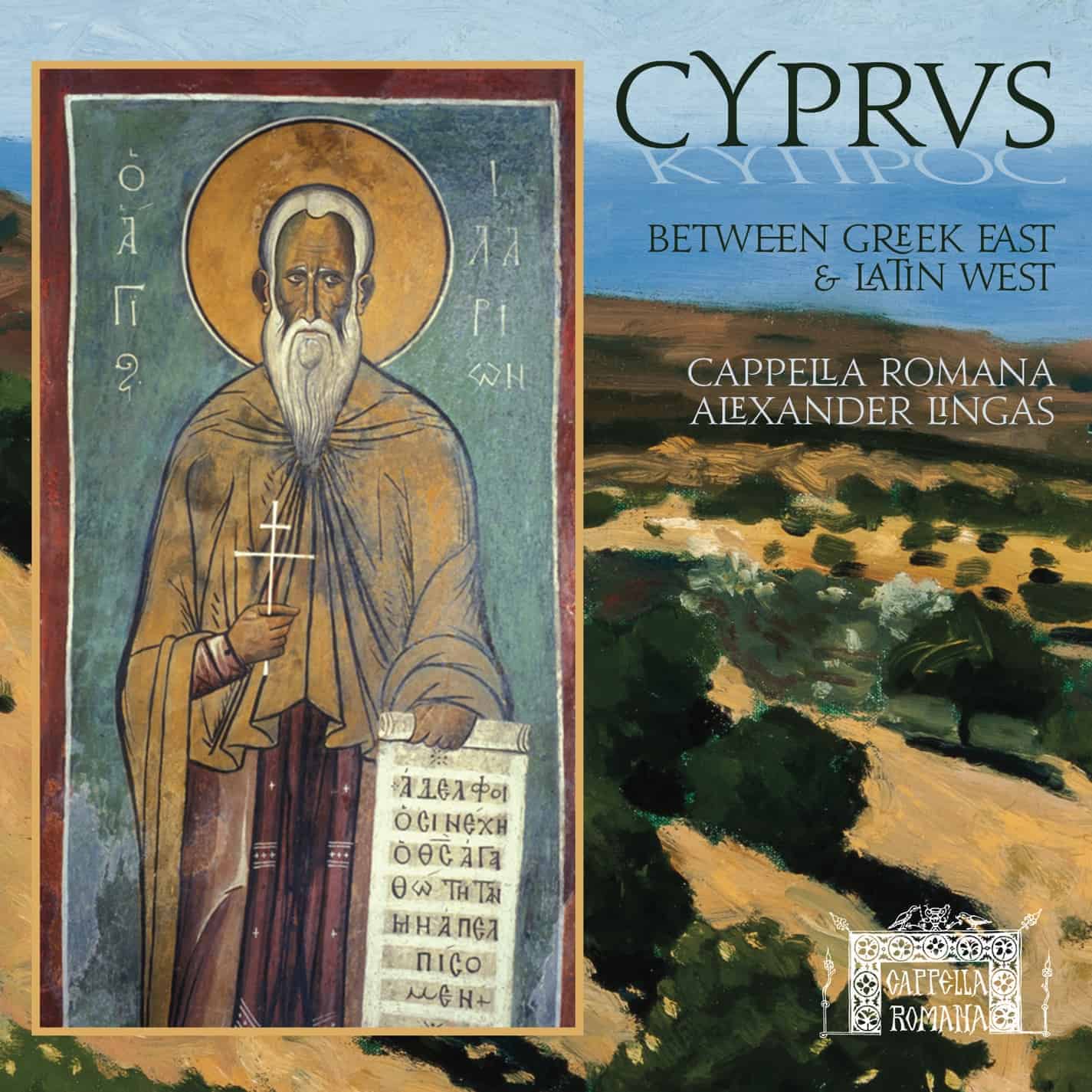Your cart is currently empty!
Cyprus — The Ars nova and its Byzantine Counterpart
 Latin and Greek sacred music of the Middle Ages shared both roots in the Christian psalmody of Roman Late Antiquity and a common inheritance of Ancient Greek musical theory. Despite centuries of troubled relations between Byzantine Christianity and the Church of Rome that went from bad to worse with the Crusader sack and occupation of Constantinople in 1204, Western and Greek writers continued to describe favourably encounters with the music of their counterparts well into the fifteenth century (Lingas 2006). One reason for this is that musical expression in the two traditions of worship remained, at base, stylistically similar. Although differing in liturgical language and the particularities of their respective systems of worship, music in the Roman and Byzantine rites consisted mainly of the unaccompanied singing of psalms and other sacred texts, a practice that we call today ‘chant’, or ‘plainchant’. Furthermore, the ways in which Byzantine and Roman (Gregorian) chant were sung seem to have been aurally compatible, even to the point of allowing simple techniques practiced by Western singers of spontaneously adding unwritten vocal parts to a chant according to basic rules of consonance – that is, the performance practices of organum and cantus planus binatim (‘plainchant twice’) – to be adopted in some circumstances by Greek cantors, especially those serving regions with religiously mixed populations.
Latin and Greek sacred music of the Middle Ages shared both roots in the Christian psalmody of Roman Late Antiquity and a common inheritance of Ancient Greek musical theory. Despite centuries of troubled relations between Byzantine Christianity and the Church of Rome that went from bad to worse with the Crusader sack and occupation of Constantinople in 1204, Western and Greek writers continued to describe favourably encounters with the music of their counterparts well into the fifteenth century (Lingas 2006). One reason for this is that musical expression in the two traditions of worship remained, at base, stylistically similar. Although differing in liturgical language and the particularities of their respective systems of worship, music in the Roman and Byzantine rites consisted mainly of the unaccompanied singing of psalms and other sacred texts, a practice that we call today ‘chant’, or ‘plainchant’. Furthermore, the ways in which Byzantine and Roman (Gregorian) chant were sung seem to have been aurally compatible, even to the point of allowing simple techniques practiced by Western singers of spontaneously adding unwritten vocal parts to a chant according to basic rules of consonance – that is, the performance practices of organum and cantus planus binatim (‘plainchant twice’) – to be adopted in some circumstances by Greek cantors, especially those serving regions with religiously mixed populations.
Even as these traditional styles of chanting continued to dominate Latin and Greek worship throughout the Middle Ages, during the fourteenth century the musical elites of West and East developed strikingly different approaches to the composition of technically advanced music. In the West, circles of theorists and composers fostered what some of them labelled a ‘New Art’ (Ars nova) of writing music in multiple parts that further distanced the practice of polyphony from its origins in improvisation. They accomplished this through the introduction of French and Italian systems of ‘mensural’ (‘measured’) musical notation that were capable of recording the relative durations of sounds with unprecedented precision, thereby allowing privileged groups of court musicians to create sacred and secular polyphonic works of great formal sophistication and rhythmic complexity.
Currents of artistic renewal in the Greek East took a markedly different route, being channelled into the elaboration of Byzantine chant. The most influential figure in the musical revolution that Edward Williams (1972) called ‘A Byzantine Ars nova’ was the composer, editor, music theorist, and Saint, John Koukouzeles (late 13th–early 14th c.). His Life identifies him as a native of Dyrrhachium (modern Dürres, Albania) who was educated in Constantinople, where he became a musician at the imperial court. Koukouzeles eventually left the capital to take up the life of a contemplative (‘hesychast’) monk of the Great Lavra on Mount Athos. He subsequently spent his weekdays in solitude practicing hesychia (literally ‘quietude’), but returned to his monastery for weekends and feasts to assist with the chanting of the All-Night Vigil. Byzantine musical manuscripts reveal that Koukouzeles contributed to the codification of older repertories while pioneering a new kalophonic (‘beautiful sounding’) idiom of chanting that spread rapidly throughout the Orthodox world. Kalophonic singing is characterised generally by vocal virtuosity, but individual chants may display different combinations of the following techniques: textual repetition, the addition of new texts (troping), melisma (the melodic extension of a single vowel), and the composition of teretismata, wordless passages on such strings of vocables as ananenes and terirem.
The present recording offers a sampling of the Byzantine and Latin sacred music that someone could have encountered during the fifteenth century by walking the short distance between the Greek Orthodox and Roman Catholic cathedrals of Nicosia. Selections of Byzantine and Latin chant in traditional genres are situated among kalophonic and polyphonic works representing the most technically advanced forms of vocal music performed on the island. The singers of Cappella Romana render this music in the light of the literary and musical witnesses to the aural compatibility of medieval Greek and Latin chanting noted above. Their vocal aesthetic is further informed by the oral traditions of received forms of Byzantine chanting (including those practiced on the Ionian Islands, which remained under Venetian control after the Ottoman conquest of Crete in 1649; see Dragoumis 1978), as well as the documentary evidence for melodic ornamentation and other forms of embellishment in sacred music of the Western Middle Ages (McGee 1998).
—Alexander Lingas
Read Part One
Read Part Three
Read Part Four
Concert Tickets
[one_half]
Seattle
Friday, 13 Nov. 2015, 7:30pm
Blessed Sacrament
TICKETS
[/one_half][one_half_last]
Portland
Saturday, 14 Nov. 2015, 7:30pm
Trinity Episcopal Cathedral
TICKETS
Sunday, 15 Nov. 2015, 2:30pm
St. Mary’s Cathedral
TICKETS
[/one_half_last]
Categories:
Tags:

You must be logged in to post a comment.